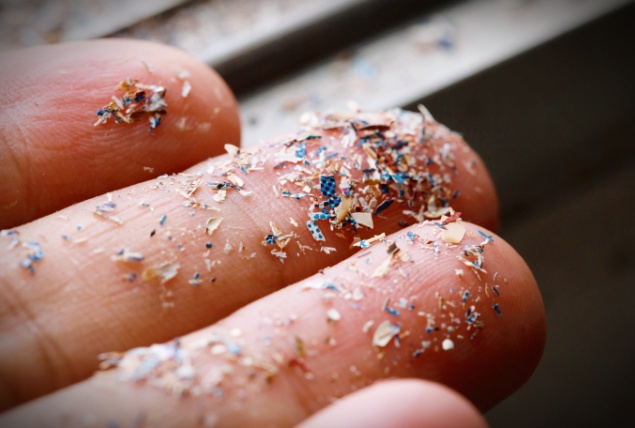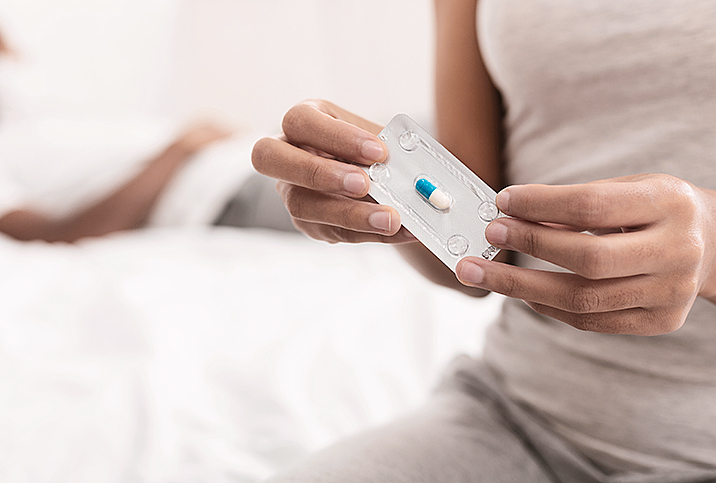Get to Know Water Vapor Thermal Therapy for BPH

Many guys enjoy time in a sauna or a hot tub. But growing numbers of men are getting a similar therapeutic treatment for their prostate. Sort of.
Water vapor thermal therapy (WVTT) is a minimally invasive surgical procedure used to treat benign prostatic hyperplasia (BPH). It involves the emission of vaporized water into the interstitial tissue of an enlarged prostate gland, which is positioned below the bladder and above the rectum.
"It is an injectable, basically steam treatment, of the prostate that causes the prostate to shrink up over time," said Charles Welliver, M.D., a urologist at Albany Medical College in New York.
Compared to other treatments for moderate to severe BPH, WVTT is an effective therapy that one study found costs less and results in lower rates of adverse effects. Two other treatments—transurethral resection of the prostate (TURP) and photoselective vaporization of the prostate (PVP)—did outperform WVTT in the measure of quality-adjusted life years, but they're more expensive. That makes WVTT (Rezūm is its commercial name) of special interest to many patients and doctors, especially as it relates to sexual activity.
WVTT in action
Every man's prostate grows naturally with age, generally starting in their 30s. For many men, this growth leads to BPH, a noncancerous condition that interferes with urine flow.
During WVTT, a scope equipped with a specialized camera passes through a patient's urethra to the prostate, said Kevin McVary, M.D., the director of the Men's Health Center at Loyola Medicine and a professor of urology at Loyola University Medical Center in Maywood, Illinois. He is also a co-author of the study that looked at WVTT's cost and rates of adverse effects.
BPH occurs in specific zones of the prostate directly adjacent to the urethra, McVary explained. Those zones tend to be different from the regions typically affected by cancer.
With the scope, the urologist scouts the target area and looks for anything that seems obstructive. Safety protocols are in place to ensure the scope doesn't get too close to the bladder or the sphincter. A small, somewhat curved plastic needle emerges from the instrument and onto the prostate tissue.
"A small amount of water converted to steam is injected," McVary said. "It's 0.5 milliliters. So I mean it is literally a drop of water converted to steam."
The steam intercalates, he said. It spreads not from cell to cell in the prostate, but into the substance of the collagen-wrapped zones and into spaces in between the cells.
Compared to other treatments for moderate to severe BPH, WVTT is an effective therapy that one study found costs less and results in lower rates of adverse effects.
"That steam translates its kinetic energy very rapidly and very efficiently," McVary said, adding the conversion of water to steam rapidly transfers a large amount of energy into the interstitium, or matrix, holding cells in position. "At this volume and this pressure, it cannot go any further, like into the rest of the prostate. So you only treat the obstructing components of the prostate, not the prostate in general. In nine seconds, that steam is delivered, and in nine seconds, the cells are irreversibly dead."
The scope, after traversing the urethra, goes into the meat of the prostate, Welliver said. Once there, it superheats the prostate with steam, which engenders cell death or tissue death within the prostate. The end result is prostate shrinkage.
The number of times the needle is inserted to release vapor depends on various factors. The volume of the prostate and its anatomical appearance through the instrument scope are primary ones, according to McVary. The average number of pokes doctors administer is five and a half, which would involve 2.75 mL of water converted into steam. Some patients receive as many as 14 pokes, requiring 7 mL of water turned into steam.
McVary, who said he has performed the procedure hundreds, if not thousands, of times, noted initial swelling—localized and temporary—occurs.
The benefits and efficacy of WVTT
On the upside, this novel therapy targets obstructive prostate tissue only, alleviating BPH symptoms, most of which are related to urination.
"It's very fast for the patient and the surgeon," McVary said. "That's why we can do it in the office 90 to 95 percent of the time."
Water vapor thermal therapy rarely, if ever, requires an overnight stay in the hospital. A man can usually have the procedure in a urologist's office and go home the same day.
Not all doctors do this, but McVary likes to insert a postoperative catheter for patients to use. This precautionary measure is meant to avoid an unnecessary emergency room visit prior to the removal of the tube after about three days. It enables the patient to urinate normally again.
The need for retreatment of BPH is about 10 percent within five years of WVTT, Welliver said. A 2022 systematic review of literature about WVTT for BPH assessed data from 19 studies in 25 articles that involved 1,942 subjects. It found surgical retreatment rates five years after a WVTT operation ranged from 4.4 percent to 7.5 percent.
Welliver added that results tend to be a bit more varied in terms of symptom-reduction scores. The systematic review found significant improvements in quality of life measures and a patient's maximum urinary flow rate based on the International Prostate Symptom Score, a screening tool used to diagnose and track BPH-related symptoms.
Medications for BPH versus WVTT
Importantly, about 90 percent of patients who get water vapor thermal therapy don't have to resume taking medications for BPH after five years, according to McVary. He also co-authored a randomized controlled trial that involved 1,140 subjects. Published in 2018 in the Journal of Urology, it found BPH-related lower urinary tract symptoms improved over three years following one WVTT procedure.
Medications used to treat BPH are generally safe and, unlike WVTT, have been used for decades. Tamsulosin (Flomax) tends to have a positive, if modest, impact on symptoms but comes with side effects. McVary cited an approximately 8 percent to 18 percent chance of retrograde ejaculation and altered ejaculation side effects, depending on dosage and various factors.
Another class of drugs, 5-alpha reductase inhibitors, can lessen the chance men will require an invasive operation. But that's if it is taken for years, he said. The drugs can take six to 12 months to produce noticeable symptom improvement, and sexual dysfunction side effects are fairly common with the drug. These effects include changes in libido, altered ejaculation and gynecomastia, an enlargement of male breast tissue.
"Everyone thinks medications are innocuous in terms of sexual function, and that's not true. In terms of preservation of sexual function, steam beats medication," McVary said.
He noted a third class of BPH drugs called beta-3 agonists can reduce symptoms such as frequent urination, seemingly without causing sexual complications.
Candidates for water vapor thermal therapy
McVary said patients who meet certain requirements should benefit most from water vapor thermal therapy, including:
- Those with BPH symptoms
- Those whose prostate is in the moderate weight range (30 to 80 grams)
- Those who would like to get off medications
- Those who want to preserve sexual function
Welliver said a variety of heat-based therapies have been used to treat the prostate over the years, but the novel mechanism of WVTT presents new possibilities for doctors and patients.
"These guys just stay on meds for forever, and they're sort of semi-miserable but not miserable enough [to seek invasive treatments with known side effects]," he said. "But now we have all these [rather safe] and effective treatments that we can use to improve symptoms for patients, and also get them off meds. So it's really kind of a new thought in BPH treatment."














